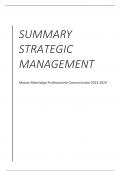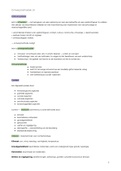Samenvatting
Summary of all classes about Strategic Management from professor Verhezen. I received high distinction for the oral exam.
- Instelling
- Universiteit Antwerpen (UA)
Very complete summary of all courses about Strategic Management from professor Verhezen. All explanations, cases and examples the professor gave in class are included. Very clear structure. I received high distinction for the oral exam. The first few pages consist of a table of contents which bring...
[Meer zien]







